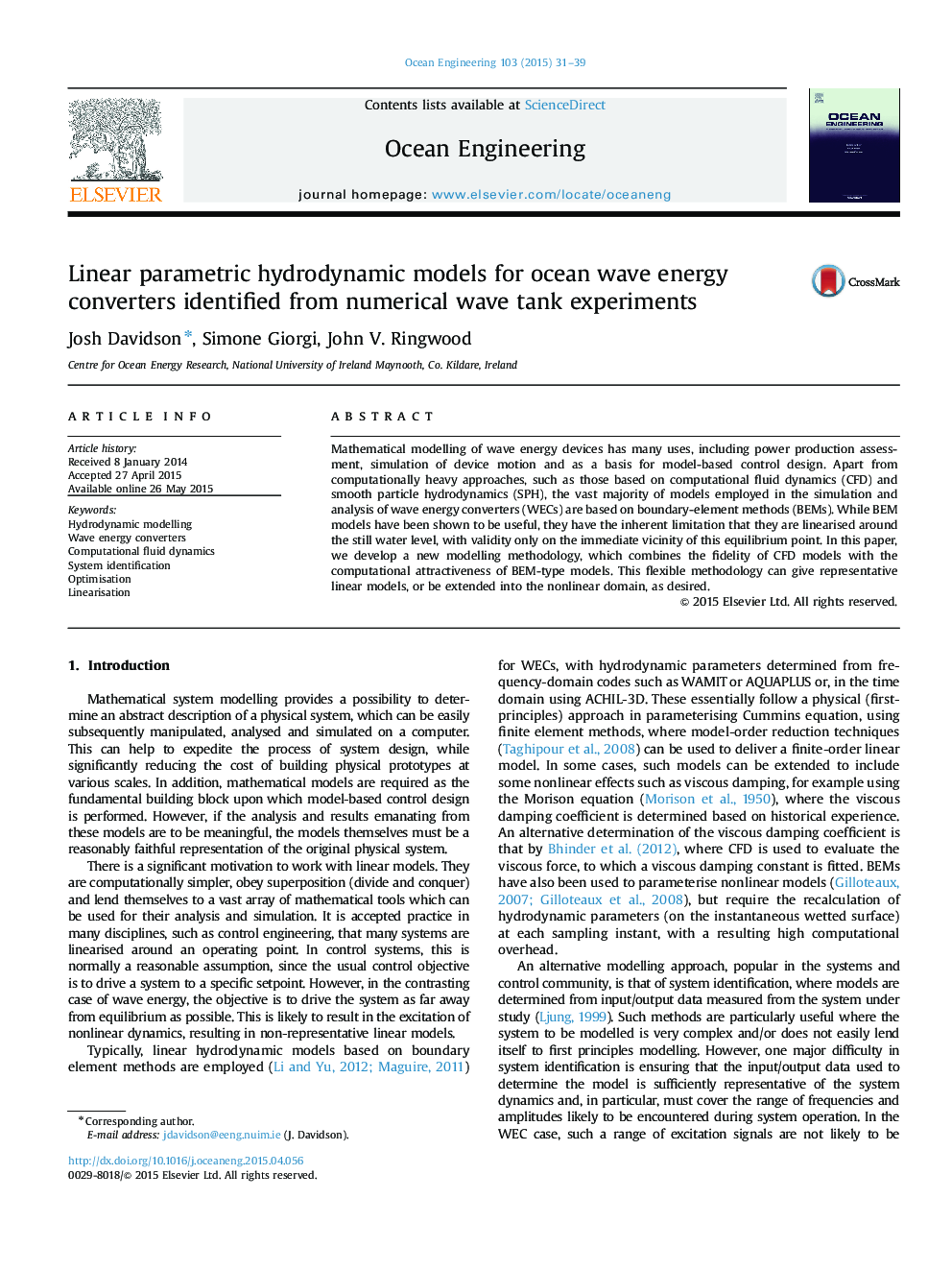| Article ID | Journal | Published Year | Pages | File Type |
|---|---|---|---|---|
| 1725437 | Ocean Engineering | 2015 | 9 Pages |
•Linear hydrodynamic models identified from CFD.•Models encapsulate nonlinearities inherent from CFD.•Able to produce representative models for different operating conditions.
Mathematical modelling of wave energy devices has many uses, including power production assessment, simulation of device motion and as a basis for model-based control design. Apart from computationally heavy approaches, such as those based on computational fluid dynamics (CFD) and smooth particle hydrodynamics (SPH), the vast majority of models employed in the simulation and analysis of wave energy converters (WECs) are based on boundary-element methods (BEMs). While BEM models have been shown to be useful, they have the inherent limitation that they are linearised around the still water level, with validity only on the immediate vicinity of this equilibrium point. In this paper, we develop a new modelling methodology, which combines the fidelity of CFD models with the computational attractiveness of BEM-type models. This flexible methodology can give representative linear models, or be extended into the nonlinear domain, as desired.
